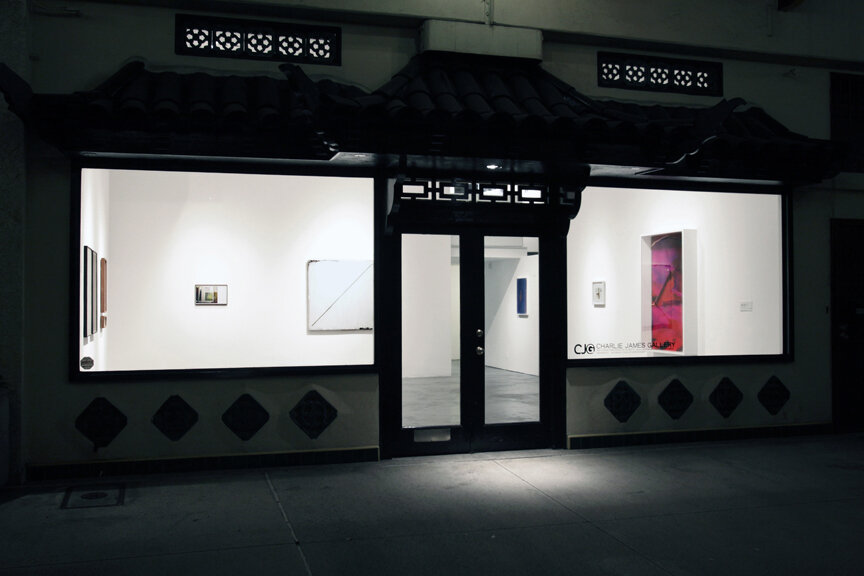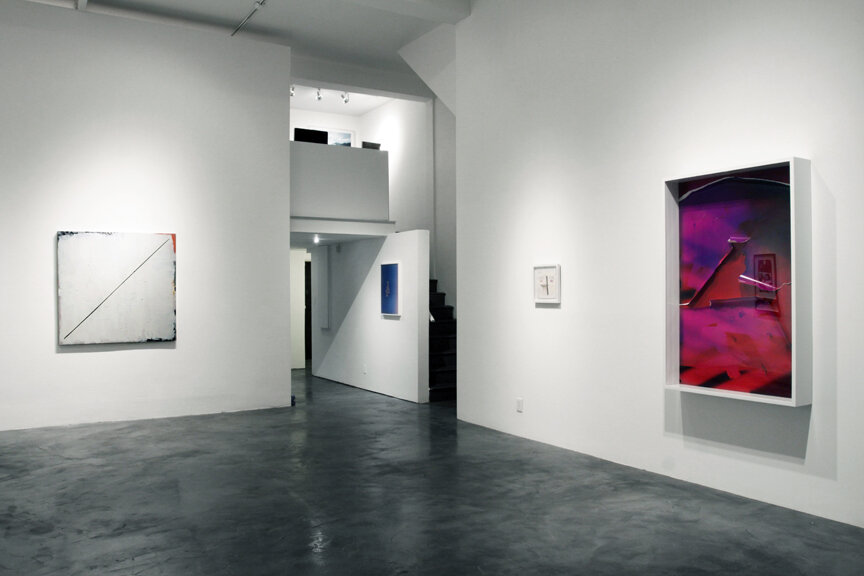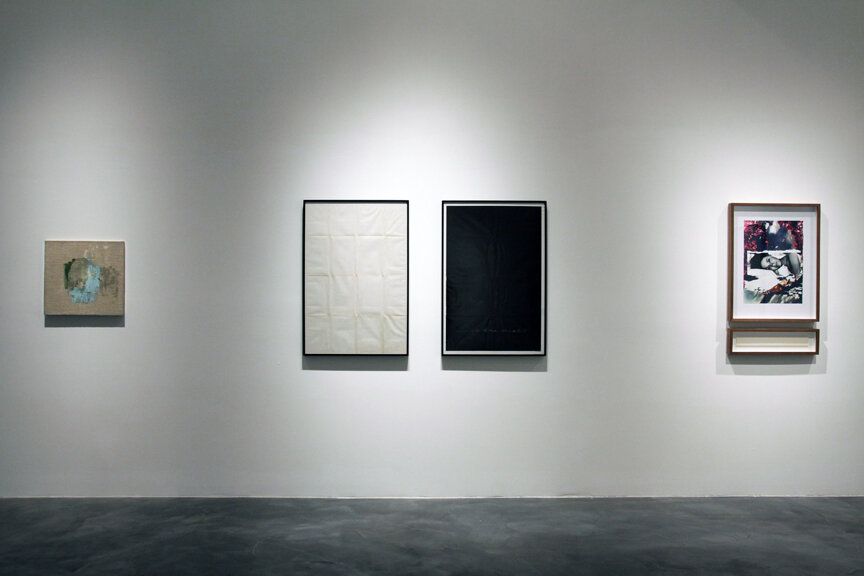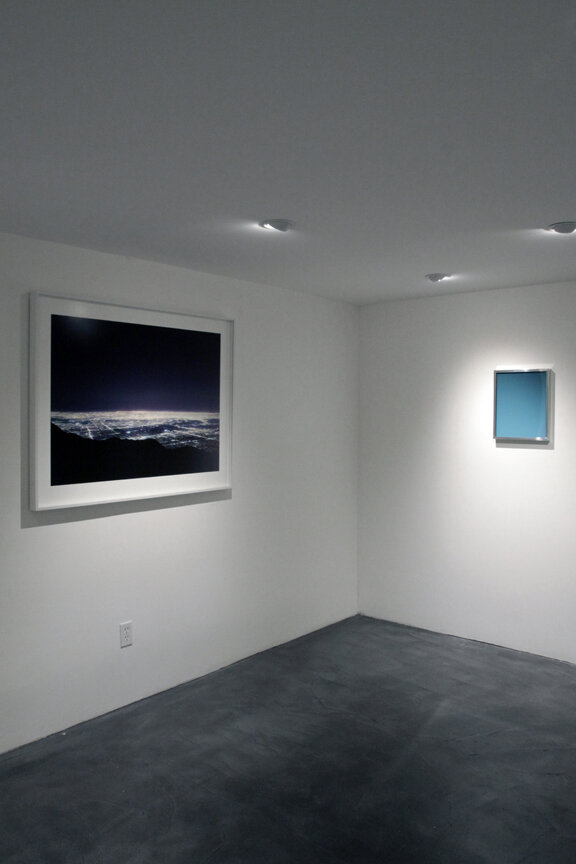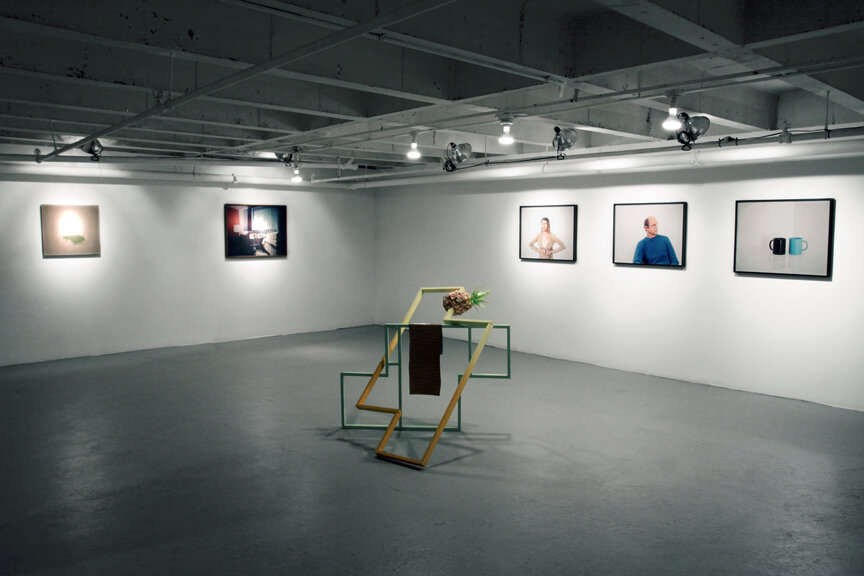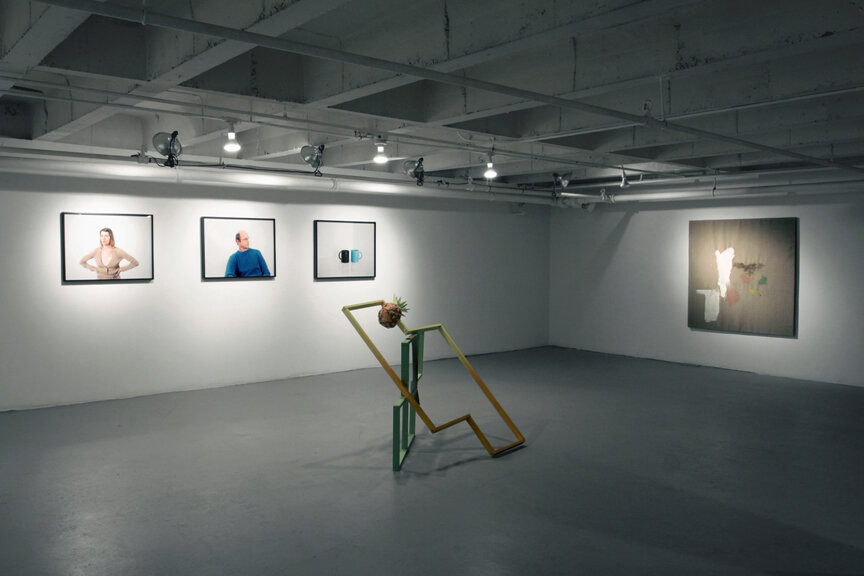_________ A ROMANTIC MEASURE.
_________ A ROMANTIC MEASURE.
Organized by Calvin Lee
July 21 - August 25, 2012
SHOW CATALOG (PDF)
PRESS RELEASE (PDF)
Sediments of the poetic, symbolic, repressed, and mechanical coalesce into works of art that interpolate abstract ideas of beauty and obsession into a kind of aesthetic emotion. In this instance, romance can be described as the pleasurable feeling of excitement and mystery associated with love. It connotes the expression of one’s love, or deep emotional desires to connect with another person, place, or object. Poetic complexities within the photographic, sculptural, painterly, and performative modes suggest realms of fetishistic desire, love, and ideas of romance.
The works in this show attempt to transcend boundaries of human codes and visual language. Similarly, the surfaces we create as artists present ideas while the layers beneath hold meaning and depth in a perpetual state of lost and found among immeasurable indexes. This complicated journey towards understanding traces an intimate walk through our perceived environment. The most intimate of spaces narrate concepts of desire, revealing the many parameters of romance as we continue to behold.
The Romantic measure of Belgian photographer Sebastien Bonin‘s monochrome photograph shows us a perfectly balanced sample of an artificial construction. Bonin toys with common notion that photography is inherently depictive by presenting a gray monochrome image. While one might consider it merely blank, the photograph is actually a black & white picture of the sky, finished with a blue acrylic transparency over it. Bonin’s “Blue Sky-1” contains echoes of the sublime, of nature and abstraction switching places in a kind of amorous jest. Erich Bollmann‘s vibrant sculptures and installations create a fictional world that is filled with handcrafted personal and commonplace objects that he uses as surrogates. His stage props narrate intimate stories about relationships and potentially between alternate scenarios. Lisa Ohlweiler‘s photographic practice is invested in creating a refined context for viewers to forge unique connections within her images. Naturally this work demands decisive, controlled relationships to her subjects. The efforts she takes to specify her images effectively highlight the presence or absence of an embodied subject, in this way constructing clear visual bonds and a heightened sense of pathos between the photographs she chooses to present.
Marcus Perez‘s investment with the medium of painting allows for a painterly process of working from the bottom up. Perez employs a minimal layering process in which abstract forms are rendered on raw linen. His compositions are preoccupied with their own materiality and progress, yielding a discourse full of self-reflexive romance and notions of existentialism. Photographer Peter Holzhauer photographs his local landscape, nomadically exploring new territories and depicting a nostalgia for the places he chooses to frame and capture with his lens. His large format photographs are epic in details, beauty, and mystery. The paintings by Nick Aguayo are intricate and playful in the use of simple forms, basic colors, and the layering of paint. His compositions act as collages that map equations from his mind which are created freely on the surface of his canvases. Augusta Wood’s photographic work uses first-hand memories and materials from her life to illustrate her family history and photo archive. Her work draws from actual spaces of personal experience. The resulting images inflect the various strange realities of one’s most intimate environments within photographic, personal, and architectural space.
EJ Hill‘s projected video chronicles a dialogue that circulates around his obsessions with social networks and sexual desire, isolating and exposing connections and fetishizing the desirable, the infamous and the famous. Mark Verabioff finished assembling his page tears for “The Scavullo Doctrine” on April 10, 2006, the same day The New York Times published Holland Cotter’s obituary on Allan Kaprow. The artist’s first reading of Kaprow’s death constituted a private action re-writing Cotter’s obit onto the page tears, creating a mysterious conceptual “Happening” with Verabioff’s romantic mourn that is pure Kaprow “Participatory Spectacle.” When a page tear is purchased (12 page tears have been privately accessioned prior this exhibition) the artwork conceptually decomposes. Ian James’ photograms register a series of marks and shapes wrought out of aggression and violence. The resulting exaggerated gestures and striking fields of color offer fragmented views of objects that were either thrown or wrestled with in the process of making his sculptural photographs.
A Los Angeles native, Lesley Moon‘s work ruminates on ideas of love, poetry and the industries of luxury and fantasy that she grew up among. Her interest in the collisions and contingencies that occur as these ideas intermingle creates its own intransigent delight in earnestly romantic excesses. Calvin Lee’s digitally rephotographed magazine collages construct true moments out of narrative possibilities. His geographical research on Rodeo Drive and greater L.A. for the past few years has been inspired by the allure of the landscape in which he chooses to explore in wanderlust and in places that are often not easily accessible. His infatuation in the connection of images and visual material exercises longing desires within the conventions of advertising culture, discourses surrounding the medium of photography. Bobbi Woods uses modified found movie posters and video to both obscure and reveal embedded imagery and text – dressing up a cinematic context with potential for many more exotic and intrepid meanings, all of the stuff that makes for great melodrama.
Aaron Wrinkle’s musical requiems transmute pure energy into performance. His solo guitar enactments transpose the naivete of soulful experimentation with the qualities of mastery and merit, and the yearning of angst-filled expression. Brandon Andrew performs a scene from “Say Anything’ staring John Cusack. His intimate love affair encapsulates the stage in an emotional Motion Picture performance debut with Whitney Houston “Didnt We Almost Have It All”, setting the soundtrack and animating the artwork in this show as the backdrop to a heartbreaking obsession to a dying love relationship.
A true romance marries an alchemy connecting the heart, soul, and mind. Can romance be measured in words, or is love but a second hand emotion? What’s love got to do with it?
Text Attribution: Calvin Lee, July 2012

